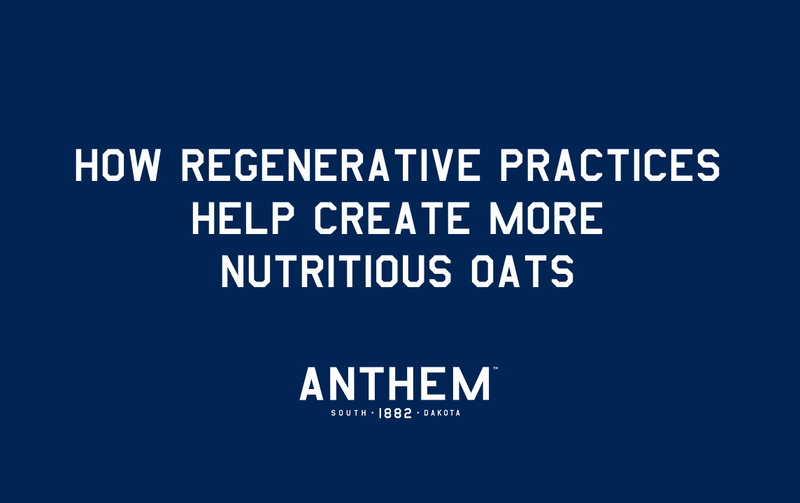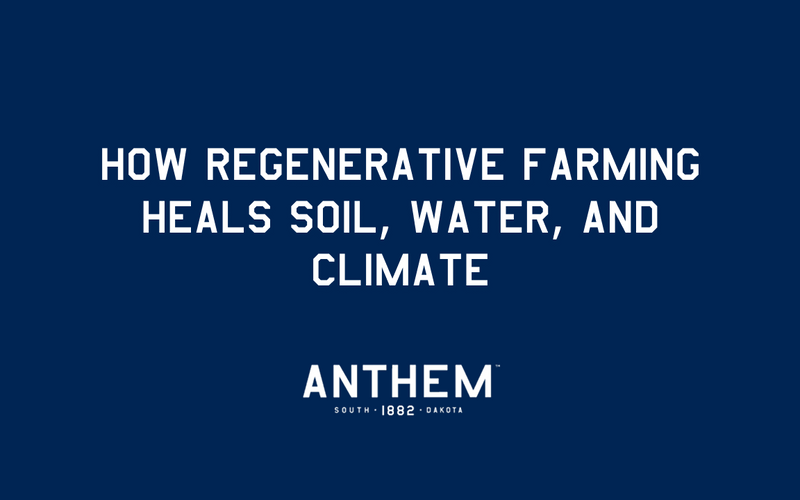
When most people think about nutrition, they think about what’s in their food: protein, fiber, vitamins, minerals. But an often-overlooked truth is that the health of the soil directly impacts the nutrition of what grows from it.
That’s why regenerative farming practices matter, not just for the land, but for the oats that end up in your bowl.
What Are Regenerative Practices?
Regenerative agriculture is a way of farming that works with nature instead of against it. Rather than relying on chemical shortcuts, regenerative farmers use crop rotations, cover crops, minimal tillage, and careful stewardship of the soil to restore its health year after year.
The goal isn’t just to maintain the land, it’s to actively improve it. Healthier soil means stronger ecosystems, greater resilience to drought and flood, and crops that carry the richness of the land into their nutrition.
Why Soil Health Equals Human Health
Soil is alive. In every handful of healthy soil, you’ll find billions of microorganisms working together to cycle nutrients, hold water, and create structure. When soil is overworked or depleted, these natural systems break down, and so does the nutrient density of the food grown from it.
Studies have shown that crops grown with regenerative methods often contain higher levels of certain vitamins, minerals, and antioxidants compared to conventionally grown counterparts. The reason is simple: healthier soil transfers more nutrition to the plant, which ultimately transfers more to you.
Oats That Carry More Than Fiber
Oats already have an impressive nutrition profile: beta-glucan for heart health, fiber for digestion, and steady energy release that keeps you full longer. But when oats are grown in regeneratively managed soil, they bring more to the table.
Nutrients like zinc, magnesium, and polyphenols are often more available in regeneratively grown crops. These micronutrients may not make the headline of the nutrition label, but they play key roles in immune function, energy production, and overall wellness.
How Anthem Oats Puts It Into Practice
At Anthem Oats, regenerative practices aren’t a trend, they’re a continuation of five generations of farming with respect for the land. Here’s what that looks like in action:
-
Crop Rotations: Instead of planting the same thing season after season, we rotate crops to replenish the soil and prevent nutrient depletion.
-
Dedicated Oat Acres: We reserve fields exclusively for oats, reducing cross-contact with other grains and ensuring a cleaner harvest.
-
Minimal Inputs: By focusing on soil health, we reduce the need for synthetic chemicals. Healthy soil does the work naturally.
-
Milling with Integrity: Once harvested, we mill our oats with a light touch to preserve their natural nutrient content.
The result? Oats that are nutrient-dense, flavorful, and grown in a way that supports the land as much as it supports your health.
Nutrition That Flows From the Land to the Table
Nutrition isn’t just about calories or macronutrients. It’s about the invisible chain that connects the health of the soil to the health of the human body. Regenerative farming strengthens that chain, ensuring that when you eat a bowl of oatmeal, you’re not just fueling your day, you’re benefiting from land that’s alive, thriving, and full of vitality.
Why This Matters for Your Breakfast
Not all oats are grown the same way. Choosing oats grown with regenerative practices means choosing food that’s better for you and better for the planet. It’s a small shift with a big impact: higher-quality nutrition in your bowl and healthier soil for future harvests.
At Anthem Oats, that’s the commitment behind every bag.
Clean oats. Rich nutrition. Farming that gives back more than it takes.


